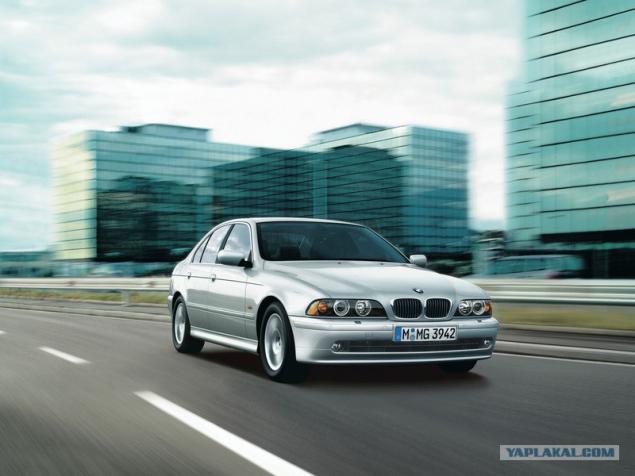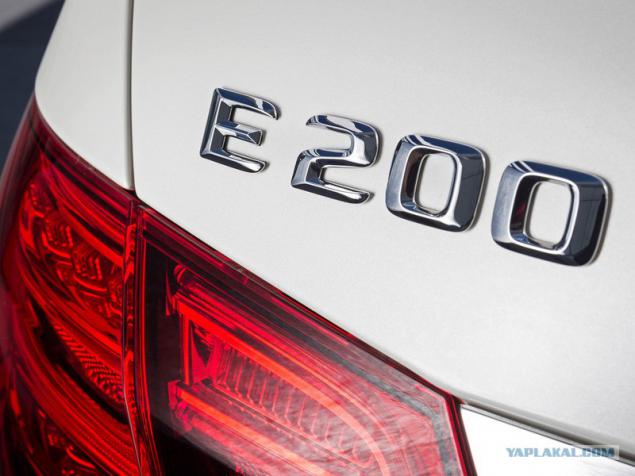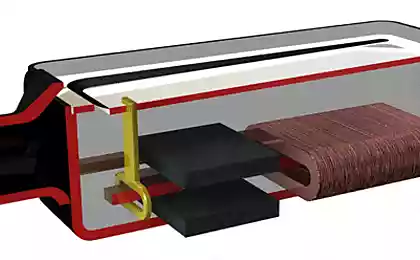511
Why do manufacturers' muhlyuyut "models with indexes?
Continuing the theme of simple questions
Week
No wonder they say that before the grass was greener, the sun is brighter and the trees above. Model designation, too, were clear and understandable. According to figures on the trunk lid, even a schoolboy could determine which engine is in a BMW or Mercedes. Now everything is different, and the nameplates on the car have meant nothing.
Will 4 photo

Although for a long time it was different. We Bavarians familiar numerals series came with "treshki» E21 in 1975, and Mercedes-Benz have a similar system was finally formed in the '90s. Formulas were simple. For example, the first digit of the BMW means belonging to one or another model, the next two - the volume of the engine. 16 - 1, 6 L, 20 - 2, l 0, 25 - 2, 5 l etc. Accordingly, BMW 520 - a two-liter "five", BMW 740 - four-liter "seven", etc. There were, of course, exceptions, such as M5 and Z8 - but in general the system was maintained. The "Mercedes" scheme similar. The first letter of the model outputs, and immediately after her - a three-digit code, which, again, indicates the volume of the engine. Mercedes-Benz C200 - «tseshka" with the engine 2 liters, E350 - «eshka" with the engine 3, 5 liters.
Times when define the scope of the motor rating plate can be irretrievably gone. Matches can be, but now it is rather an exception to the rule.
Obschectvo consumption
But that was long ago. Since 1995, manufacturers have sought "to the winds." Digital codes were only decipher them was not so easy.
The fact that the car companies, like all other manufacturers, so uncomplicated way to adapt to the modern consumer society. The rapid growth of the economy, incomes of the population of the Earth and the development of scientific and technological progress has led to the fact that a prospective buyer of any product subconsciously waiting for continual improvement of the characteristics of this product.
Moreover, improvements can be quite conventional, the main thing - to any option has steadily increased, thus showing the advantage of the new over the old device. So it was with microprocessors (recall race GHz from Intel and AMD), so it was with cameras (matrix resolution in megapixels), a similar story was even NiMH-batteries size AA (so-called "fingers"), where some time ago manufacturers could increase the capacity of the battery - 1800, 2000, 2500, 2700 mA / h, etc. The only problem with this logic - sooner or later it stops working. Processors have rested in the physical limitations of clock frequency, a huge array of amateur cameras do not give a good quality due to poor optics, and battery manufacturers have reached a limit in the improvement of NiMH technology.
And if such a need electronics with variable success fails to decide to switch to other parameters (core processors, the ISO sensitivity cameras, chemical composition), the more conservative areas such as the automotive industry such focus does not pass. Like 40 years ago, and now mass produced cars with engines of about the same size (take the same 1, 6), and although many of their indicators (for example, energy efficiency) has improved dramatically, the meaning does not change. Moreover, the non-stop build capacity is also impossible - so in addition to the "hovering" volume, the amount of horsepower the last 10 years, also marking time. If we add more and more demands on efficiency and emissions, the car manufacturers not to be envied.
That's where the miracles begin - something customers expect improvements!

Blame marketers
That is what happened back in 1995, when the new generation of the BMW fifth series (factory index E39) version with engine capacity of 2, 5 liters due to new environmental standards was less powerful than the previous E34 (170 hp instead of 190 hp .from.). Assign machine habitual designation 525i decided not to - because then the audience could tell that "every year 525i becomes less powerful."
In the case immediately joined marketers who decided to break the old tradition of making codes on the trunk lid more conditional. Derated "five" have called 523i. It seems like it might be such characteristics of the model with the engine 2, 3 liter, if such a version is present in the "fifth" of the family. So now the numbers are not designated volume of the motor, and the "slope" of different versions of the model relative to each other. Later in the family still there was a modification under the hood which was the engine of the same volume of 2, 5 liters, but razvivavschy has 190 hp - And she was given the name of the former 525i.
Here it is - the hero of the Troubles in the nameplates! "Five» BMW in the back of E39 with the motor 2, 5 liter proved to be weaker and slower than its predecessor, so marketers are contrary to the old rules do not call it 525i, and 523i.

Tricky decision to completely untied the hands of the engineers. This is especially noticeable now, in the era of turbo engine when ideologically very different, for example, the version of the 320i and 328i engines actually have the same working volume - 2 liters. The three-liter diesel engine is under the hood and in the X5 xDrive 30d, and in the X5 xDrive M50d. High numbers allow to emphasize the power and status of the vehicle - X5 xDrive50i is actually the engine of 4, 4 liters, not 5. The main thing - satisfied customers who pay money for a more powerful version of the car.
But back in the nineties. The current situation immediately took advantage of competitors, also declined to a hard peg the index to the working volume of the engine. At the beginning of the two thousandth Mercedes-Benz C-Class I got as a "true" version of the C180 K and "feykovye» C200 K and C230 K - under the hood of all three were different power versions of the same compressor motor KE18ML (also known as M271) of 1, 8 liters. For compact sedan pulled all the other models.
Competitors gladly took up the opportunity to cheat - numerals Mercedes-Benz also did not have a hard peg to the volume of the engine. Especially funny it looks on versions 63 AMG, under the hood when in most cases is not the legendary aspirated engine of 6, 2-liter, twin-turbo unit in volume and 5, 5 liter ...
The third German premium brand - Audi - have never used the binding capacity of the engine to the model name, the old-fashioned gluing on the trunk lid label with the exact numbers of the working volume. But now "four rings" sometimes prefer not to advertise the whole truth. In 2011, the turbocharged models have universal designations TFSI or do not receive any. Germans can understand - hard to explain to a potential buyer why the flagship Audi A8 Hybrid for 4 million rubles a motor working volume of 2 liters ...
ALL!!!

Source:
Week
No wonder they say that before the grass was greener, the sun is brighter and the trees above. Model designation, too, were clear and understandable. According to figures on the trunk lid, even a schoolboy could determine which engine is in a BMW or Mercedes. Now everything is different, and the nameplates on the car have meant nothing.
Will 4 photo

Although for a long time it was different. We Bavarians familiar numerals series came with "treshki» E21 in 1975, and Mercedes-Benz have a similar system was finally formed in the '90s. Formulas were simple. For example, the first digit of the BMW means belonging to one or another model, the next two - the volume of the engine. 16 - 1, 6 L, 20 - 2, l 0, 25 - 2, 5 l etc. Accordingly, BMW 520 - a two-liter "five", BMW 740 - four-liter "seven", etc. There were, of course, exceptions, such as M5 and Z8 - but in general the system was maintained. The "Mercedes" scheme similar. The first letter of the model outputs, and immediately after her - a three-digit code, which, again, indicates the volume of the engine. Mercedes-Benz C200 - «tseshka" with the engine 2 liters, E350 - «eshka" with the engine 3, 5 liters.
Times when define the scope of the motor rating plate can be irretrievably gone. Matches can be, but now it is rather an exception to the rule.
Obschectvo consumption
But that was long ago. Since 1995, manufacturers have sought "to the winds." Digital codes were only decipher them was not so easy.
The fact that the car companies, like all other manufacturers, so uncomplicated way to adapt to the modern consumer society. The rapid growth of the economy, incomes of the population of the Earth and the development of scientific and technological progress has led to the fact that a prospective buyer of any product subconsciously waiting for continual improvement of the characteristics of this product.
Moreover, improvements can be quite conventional, the main thing - to any option has steadily increased, thus showing the advantage of the new over the old device. So it was with microprocessors (recall race GHz from Intel and AMD), so it was with cameras (matrix resolution in megapixels), a similar story was even NiMH-batteries size AA (so-called "fingers"), where some time ago manufacturers could increase the capacity of the battery - 1800, 2000, 2500, 2700 mA / h, etc. The only problem with this logic - sooner or later it stops working. Processors have rested in the physical limitations of clock frequency, a huge array of amateur cameras do not give a good quality due to poor optics, and battery manufacturers have reached a limit in the improvement of NiMH technology.
And if such a need electronics with variable success fails to decide to switch to other parameters (core processors, the ISO sensitivity cameras, chemical composition), the more conservative areas such as the automotive industry such focus does not pass. Like 40 years ago, and now mass produced cars with engines of about the same size (take the same 1, 6), and although many of their indicators (for example, energy efficiency) has improved dramatically, the meaning does not change. Moreover, the non-stop build capacity is also impossible - so in addition to the "hovering" volume, the amount of horsepower the last 10 years, also marking time. If we add more and more demands on efficiency and emissions, the car manufacturers not to be envied.
That's where the miracles begin - something customers expect improvements!

Blame marketers
That is what happened back in 1995, when the new generation of the BMW fifth series (factory index E39) version with engine capacity of 2, 5 liters due to new environmental standards was less powerful than the previous E34 (170 hp instead of 190 hp .from.). Assign machine habitual designation 525i decided not to - because then the audience could tell that "every year 525i becomes less powerful."
In the case immediately joined marketers who decided to break the old tradition of making codes on the trunk lid more conditional. Derated "five" have called 523i. It seems like it might be such characteristics of the model with the engine 2, 3 liter, if such a version is present in the "fifth" of the family. So now the numbers are not designated volume of the motor, and the "slope" of different versions of the model relative to each other. Later in the family still there was a modification under the hood which was the engine of the same volume of 2, 5 liters, but razvivavschy has 190 hp - And she was given the name of the former 525i.
Here it is - the hero of the Troubles in the nameplates! "Five» BMW in the back of E39 with the motor 2, 5 liter proved to be weaker and slower than its predecessor, so marketers are contrary to the old rules do not call it 525i, and 523i.

Tricky decision to completely untied the hands of the engineers. This is especially noticeable now, in the era of turbo engine when ideologically very different, for example, the version of the 320i and 328i engines actually have the same working volume - 2 liters. The three-liter diesel engine is under the hood and in the X5 xDrive 30d, and in the X5 xDrive M50d. High numbers allow to emphasize the power and status of the vehicle - X5 xDrive50i is actually the engine of 4, 4 liters, not 5. The main thing - satisfied customers who pay money for a more powerful version of the car.
But back in the nineties. The current situation immediately took advantage of competitors, also declined to a hard peg the index to the working volume of the engine. At the beginning of the two thousandth Mercedes-Benz C-Class I got as a "true" version of the C180 K and "feykovye» C200 K and C230 K - under the hood of all three were different power versions of the same compressor motor KE18ML (also known as M271) of 1, 8 liters. For compact sedan pulled all the other models.
Competitors gladly took up the opportunity to cheat - numerals Mercedes-Benz also did not have a hard peg to the volume of the engine. Especially funny it looks on versions 63 AMG, under the hood when in most cases is not the legendary aspirated engine of 6, 2-liter, twin-turbo unit in volume and 5, 5 liter ...
The third German premium brand - Audi - have never used the binding capacity of the engine to the model name, the old-fashioned gluing on the trunk lid label with the exact numbers of the working volume. But now "four rings" sometimes prefer not to advertise the whole truth. In 2011, the turbocharged models have universal designations TFSI or do not receive any. Germans can understand - hard to explain to a potential buyer why the flagship Audi A8 Hybrid for 4 million rubles a motor working volume of 2 liters ...
ALL!!!

Source:
Lawlessness traffic policeman in the city of Naberezhnye Chelny
It was possible to print a working sample of the liver























